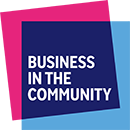Currys: the power of repairing
This case study outlines how technology products and services retailer Currys has used circular thinking to inform their core business model bringing about significant carbon and cost savings.
What is the issue?
Electrical and technology items are too often regarded as having a limited life which means they will be discarded and replaced with brand new products within a few years of purchase, or even sooner.
What are Currys doing about it?
This model is being challenged as the need to move from a throw-away society has come into sharper focus. In terms of taking a circular approach to the products it sells Currys has been ahead of the curve, offering a repair service to customers for the past 40 years. This service is offered across a wide range of technology, from fridge freezers to smart phones and is done on a substantial scale.
The result:
- 1 million items are repaired annually.
- 1,350 engineers are employed to support with reuse and repair. A spare parts operation also salvages components from products that are beyond repair, reducing the demand for new parts within the supply chain and the lead time on repairs.
- 100,000 tonnes of CO2e (carbon dioxide equivalent) emissions are prevented annually.
- £1.7 million savings in spare parts costs due to their salvaging operation.
What have Currys learnt?
- The offer of a repair service is greatly appreciated by customers and increases customer satisfaction and loyalty.
- The environmental benefits of what started as a simple customer service, have now become central to the business strategy.
- The repair process itself allows the business to build up a valuable diagnostics and faults database which they can feed back to manufacturers to help improve future products.

The need to move away from the throw-away society has come into sharper focus. Currys has been ahead of the curve, offering a repair service to customers for the past 40 years.

Business in the Community’s work on the circular economy
The circular economy offers an alternative way of using resources to a traditional, linear economy. Resources are designed for longer lifetimes, repair, reuse and reprocessing. It is evident that we need to redesign how resources are used to achieve a zero carbon economy.
This case study is one of a series which share how BITC members have achieved carbon reduction by taking a circular economy approach.

CLIMATE ACTION: THE TIME IS NOW

Related content
Circular Fitout Lab Actions Statement
Download the Circular Fitout Lab insights document to read the inventory of actions and statement of demand from the lab.
Going Circular for Net Zero: in your hands
This Business in the Community (BITC) report sets out the enablers and levers that can help businesses mainstream circular economy action.
Optimising Bioresources: reducing water pollution
This report provides solutions specifically tailored for companies involved in managing and optimising bioresources and reducing biowastes.
